'Anytime I get on a plane, I think of Final Destination': The horror film that traumatised millennials
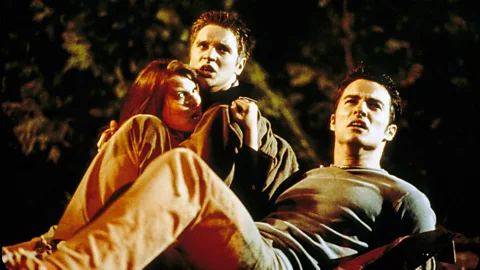 Alamy
AlamyTwenty-five years ago, the first instalment terrified by making everyday scenarios into death traps. Now, after a 14-year break, Final Destination: Bloodlines is tweaking the formula.
"In death, there are no accidents, no coincidences, no mishaps, and no escapes."
Those are the unsettling words of all-knowing mortician William Bludworth (played by Tony Todd) in the first Final Destination (2000), a horror film without a masked killer, bloodsucking vampire or brain-eating zombies to torment its victims – just the looming spectre of death and a cruel reality: no matter how far we run, or how much we hide, it will come for us all.
Back in the original film, death certainly didn't come peacefully for a group of high school kids and their teacher, who narrowly escaped losing their lives after getting off their plane, the ill-fated Flight 180, just before it exploded, thanks to one of their number having a premonition – only to find that the Grim Reaper wanted to take revenge on them for cheating its design.
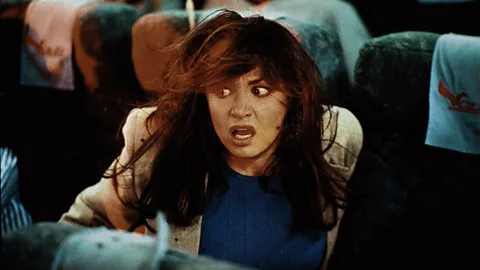 Alamy
AlamySo for 90 minutes, audiences strapped in to watch this invisible antagonist orchestrate some of the most intricate and shocking demises imaginable for each survivor, involving all kinds of routine objects, from a clothesline to kitchen knives. Young audiences around the world left cinemas scared of everything around them. "I must have been 15, seeing it with my friends, and we were grabbing each other," millennial and filmmaker Diana Ali Chire tells the BBC. "The plane thing was just genius because anytime I get on a plane, I think of Final Destination."
The brainchild of screenwriter Jeffrey Reddick, Final Destination followed in the teen horror footsteps of Scream (1996) and I Know What You Did Last Summer (1997) to become a box office success, traumatising an entire generation of cinema-goers along with it. "[As millennials] we grew up on 90s slasher movies and they all have that similar vibe of cool, young stars of the time with a nice balance of scary and entertaining – Final Destination felt so much like it was part of that wave," Mike Muncer, host of the Evolution of Horror podcast, tells the BBC. "I remember seeing posters for it and thinking, 'This is very much my jam.'" But thanks to its grisly, nihilistic plotline, it also shifted the teen horror needle, adds Muncer. "We didn't have a masked killer anymore, there was no motive, it was just watching people die and being walloped with something entirely unexpected."
The film subsequently spawned four sequels, each one keeping the same basic formula but upping the ante with even more elaborate ways to end human life, before taking a 14-year break. But now, finally, it's back this week with a sixth instalment, Final Destination: Bloodlines, whose storyline ties every previous film together. "It was important for us to thread the needle to make the movie both very clearly part of the franchise canon and part of the lineage of all the previous movies," co-director Zach Lipovsky tells the BBC. "But also [we wanted to make it] incredibly fresh and unpredictable for all the people who love these movies."
From idea to screen
The franchise began when a 27-year-old Reddick was reading a news article while taking a flight from New York back to his home state of Kentucky. The story described a woman who had avoided being in a plane crash by switching flights because of a bad feeling her mother had about her original aircraft. It inspired him to write a "spec script", or unsolicited screenplay, for his favourite TV show, The X-Files, in which "Scully's brother had a premonition", Reddick explains. "[I thought:] what if they cheated death, and death came after them?"
Working at New Line Cinema at the time, Reddick shared this episode script with colleagues who were so impressed by the originality of the concept that they persuaded him to write it as an entirely separate feature film instead. "[There are] shades of The Omen in Final Destination, where you've got this little devil child Damien causing bad things to happen to people," Muncer says. "But I think it's pretty unique."
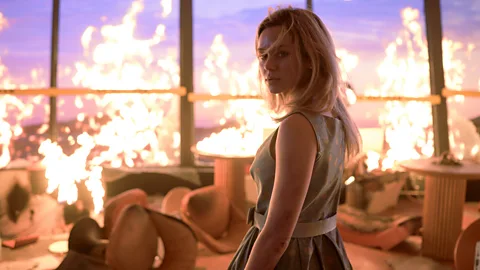 Warner Bros
Warner BrosThe script went through a lot of changes before production began in Long Island and Vancouver in 1999. "In the original story, death was a force that took over a police detective who was investigating a case," Reddick explains, "You found out that he had flatlined at the same time as a plane crash, so the essence of death went into him and he was killing off the crash survivors."
But for producer Craig Perry, who has worked on every Final Destination film, it was "the intersection of coincidence and what ifs" in the original three-page outline that he wanted the film to focus on. "Everyone at some point in their lives has had a moment of deja vu, or that weird, tingly feeling that something bad is about to happen," he tells the BBC. "Or conversely, when you have a close call, you start to wonder, maybe had I not turned left but right, I would be dead."
With such bleak fatalism at its core, some mischievousness was injected for balance once seasoned X-Files scribes James Wong and Glen Morgan entered the frame. They punched up death into a more playful character by way of its elaborate killing schemes, which were inspired by late American cartoonist Rube Goldberg's famous drawings of "chain reaction devices": imaginary inventions "where A had to hit B, which had to hit C, which had to hit D, in perfect sequence for the machine to work", notes Perry.
Yet the studio couldn't get their heads around an antagonist they couldn't see. "You've [typically] got a Freddy, a Jason or some visualisation that the [protagonists] can fight, so [the studio] made me put this [actual] angel of death character in the script," recalls Reddick.
The idea was that this physical figure would turn up to taunt the protagonist Alex (Devon Sawa), who had the premonition, from the shadows. Luckily for Reddick, Wong and Morgan fought back and got their way with their original vision of death as an abstract force made tangible only via elemental flourishes like gusts of wind and leaking water, which both signalled its presence and its fatal machinations. "We wanted to keep these to the more natural elements, which would be in the arsenal that death could take advantage of," says Perry. "So, water, wind, electricity, the simple erosion of dirt, gravity – all of those things are the things that death has easy access to, to manipulate inanimate objects."
For Bloodlines, the personification of death has evolved even further, with the film-makers using the looming framing of IMAX cameras to tell the audience it has arrived. "In the IMAX release of the film, death's perspective expands on screen," says co-director Adam. "Every scene where death arrives, that's where we expand to IMAX so you feel death coming with each close-up shot of everyday objects."
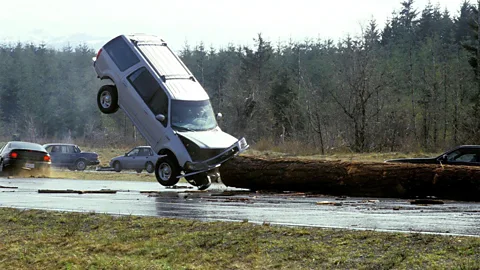 Alamy
AlamyMaking the mundane malevolent was key to Final Destination's "traumatisation factor", as Perry puts it, with everything from coffee mugs to nose hair trimmers turned into potential threats, but it wasn't always easy to pull off. "Getting the [sequence of accidents] to work is pretty hard," says Perry, "because when you creatively come up with something, you have to imagine how to make sure that the things that need to collide with each other do it plausibly so that the audience isn't taken out of the moment."
What drives these scenes is the dramatic irony of the audience knowing that, whether at the dentist's or in a tanning booth, the characters are unwittingly at the centre of a death trap. "[The audience] know that there's something in the room manipulating elements, so they're immediately empathetic to the characters, pointing and yelling at the screen," adds Perry. "So you're looking at a can of tuna and after two or three shots, that's no longer a can of tuna, that is an instrument of death."
Changing the core characters from adults, as they were in the original scripts, to teens was a key selling point of the first Final Destination, too, since teen horror was all the rage at the time and already recognisable actors like Sawa, Varsity Blues' Ali Larter, Dawson's Creek's Kerr Smith and American Pie's Sean William Scott were a draw for younger audiences. "I watched Devon Sawa in Idle Hands," says Chire, referring to the 1999 horror comedy the actor made just before. "So when I found out he was in Final Destination, I wanted to see it."
For die-hard horror fans, the casting of Todd, famous for his turn in 1992's Candyman, as the pivotal character who explains the whole premise was the icing on the cake. "He just gives it some horror clout," says Muncer. "This supernatural evil coming for you, the idea of a curse, links back to Candyman."
Upon its release, Final Destination made $112,036,870 (£83,862,398) worldwide against a $23,000,000 ($17,220,000) production budget, and a sequel was greenlit immediately. "Most horror films drop 50% in their first weekend, and we were watching the movie climb the box office," recalls Reddick, who got to work penning the next script with a fresh twist: the new cohort of teen and adult characters had all escaped their original intended death, before the events of Final Destination 2, because the FD1 survivors had got off the notorious Flight 180, "so that you saw a spider web effect tying into the fact that our lives are all connected."
The key elements of the franchise
Every Final Destination film connects in some way, be it big or small. From one character cheating death because another character, in a separate film, took the last cinema ticket intended for them, to the major twist of Final Destination 5 being a prequel to the original movie – the romantic leads survive to the end of that film, only to perish on Flight 180.
"That's part of the fun of the franchise," adds Perry. "Wouldn't it be interesting to see how that connectivity plays out? Death's web is far more intricate and high-level math than we ever imagined. It's the stuff that makes you sit in bed and go, 'I don't want to get up.'"
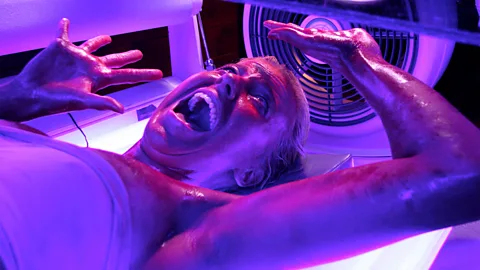 Alamy
AlamyWhen it comes to specific macabre sequences, Final Destination 2 served up one of the franchise's most enduring images of destruction with its opening highway multi-car pile-up involving a log truck. "I still get log truck memes sent to me every other day," says Reddick. But, more broadly, it also really established a template for the deaths. "There's [always] at least one moment in the chain of events that the character himself or herself actuates, to [convey] the sense that your actions [do determine] whether or not you live or die," says Perry. "And there has to [also] be a moment of just dumb luck, just the fickle Finger of Fate tapping you on the shoulder and saying, 'Pay attention.' Everything else is just the coordination of all those natural elements."
And that coordination involves a lot of misdirection. Take the spaghetti-related death of Evan Lewis, a lottery-winning survivor in Final Destination 2 – a favourite franchise moment for Lipovsky. "He slips on the spaghetti, and that's what you think is going to kill him, but then it doesn't. The cadence of that scene was a guiding light for him and co-director Adam Stein. "Final Destination is so predictable: you know that all the characters are going to die in sequence," Stein says. "So we're always trying to think of how to twist it."
"It's very common in the previous films to cut to a character by themselves in a dangerous place and the audience immediately knows [they are] dead," adds Lipovsky. "We use that expectation, then subvert, change and flip things around so that you're constantly going, 'Wait, I don't know who's next.'"
Yet in each film, the story has to give characters a fighting chance. With Bloodlines, that attempt is played out through a college student trying to save her family from the cycle of death that originated with her estranged grandmother's death-cheating premonition in the 60s. "How do you deliver upon the existential dread of death coming after you while still giving the characters agency to thwart that effort?" Perry asks. In the fifth Final Destination, it's made clear to the characters that they can cheat death by killing other characters: "If you kill somebody, you get whatever life they have left, which makes it a moral question of whether or not you're willing to do it," says Perry.
Indeed, such weighty themes are as much a part of the franchise's appeal as its inventive death sequences. It forces the audience to consider their mortality as well as questions that are universal: What would you do to survive? If you knew death was coming, would you hide away, like Ali Larter's Clear in Final Destination 2, or live your life to the fullest? That the franchise doesn't tie itself to any specific belief system makes the existential ideas it grapples with all the more relatable. "I didn't want to tie death into any kind of specific religion or culture," says Reddick. "Our movies never hammer home any message, but hopefully, what [audiences] do take away from it is that life is precious."
That ethos is particularly resonant in Bloodlines due to the presence of Todd; he passed away in November 2024, and here gives his final performance on screen, which includes a moving – and as it turns out, improvised – monologue. "We told him to throw away the script and talk to us about what's on his mind, and he said, 'Cherish, accept and love every moment that you have, because you never know when it's going to end,'" recalls Lipovsky. "It works for the character, it works for the franchise, but it's also him as an actor, speaking directly to the audience about his legacy, his work, and his feelings about life and death, all of it wrapped up together."
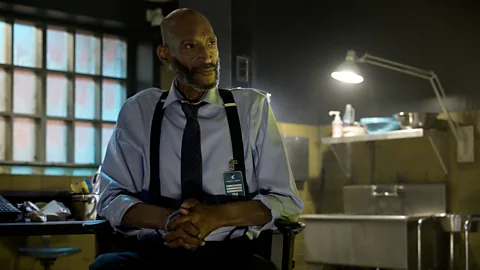 Warner Bros
Warner BrosThe legacy and cultural impact of Final Destination remain strong, even as it has been echoed by other films such as this year's The Monkey, with its similarly elaborate death sequences. And as a franchise fuelled by the infinite ways we can die, there's an infinite number of sequel possibilities. If Bloodlines does well at the box office, we might just see the universe expand further back in history, with Stein and Perry noting pirate ship and "Game of Thrones meets Final Destination" concepts have been discussed for future instalments.
But no matter where each Final Destination story ends up, there is one true constant in the Destination franchise: death is the great equaliser, so remain vigilant and look out for the signs. "If I'm driving and there is a truck with logs in front of me," says Chire. "I'm changing lanes."
Final Destination: Bloodlines is out in UK cinemas on May 14 and US cinemas on May 16
--
If you liked this story sign up for The Essential List newsletter, a handpicked selection of features, videos and can't-miss news, delivered to your inbox twice a week.
